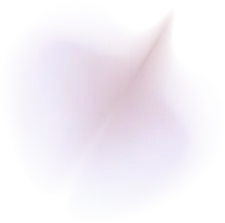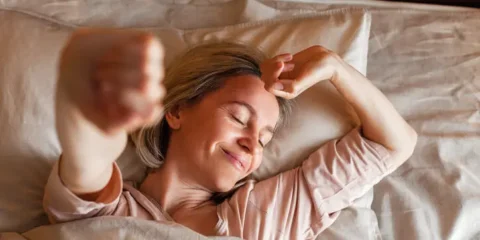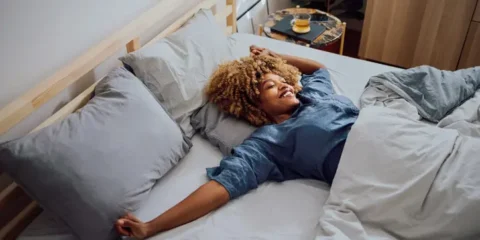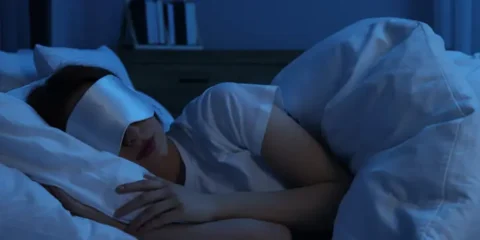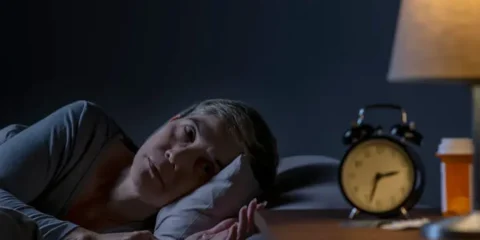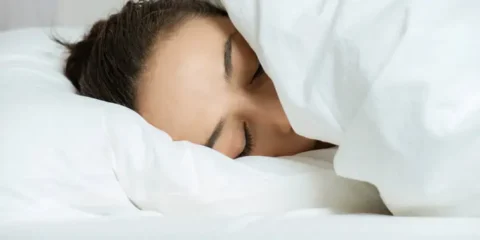Understanding Sleep Apnea Severity
Sleep apnea is a common sleep disorder characterized by repeated pauses in breathing during sleep. These breathing pauses, called apneas and hypopneas, can last 10 seconds or longer and occur 5-30+ times per hour. To measure sleep apnea severity, sleep specialists use a key metric called the Apnea-Hypopnea Index (AHI).
The AHI tracks the number of apnea and hypopnea events during an hour of sleep. A higher AHI indicates more frequent sleep-disordered breathing events and more severe obstructive sleep apnea.
By comparing a patient’s AHI to standardized severity levels, doctors can diagnose sleep apnea and determine the best treatment approach.
How is the Apnea-Hypopnea Index Calculated?
The AHI measurement requires an overnight sleep study called a polysomnogram. Patients sleep at a specialized sleep center or lab with equipment to monitor heart rate, breathing, blood oxygen levels, and brain activity.
To calculate the AHI, the total number of apneas and hypopneas occurring during the sleep study are divided by the total hours of sleep time. An apnea is defined as a pause in breathing for 10 seconds or longer. A hypopnea is an overly shallow breath that results in at least 30% reduction in airflow for 10 seconds or longer.
For example, if a patient experienced 12 apneas and 10 hypopneas over 6 hours of recorded sleep time, their AHI would be (12+10)/6 = 3.6 events per hour. The lower the AHI number, the less frequently breathing disturbances are occurring during sleep.
AHI Severity Levels for Obstructive Sleep Apnea Diagnosis
The American Academy of Sleep Medicine has defined AHI severity cutoffs to standardize the diagnosis of obstructive sleep apnea (OSA). These AHI criteria apply for adults, adolescents, and children aged 7 years or older:

An AHI below 5 breathing events per hour is considered normal and not indicative of clinically significant sleep apnea. AHI levels between 5-14 reflect mild sleep apnea, 15-29 moderate sleep apnea, and 30 or above severe sleep apnea needing urgent treatment.
However, AHI alone does not diagnose OSA. Doctors also consider the presence of OSA symptoms, like loud snoring, daytime sleepiness, morning headaches, and observed breathing pauses.
For example, an AHI of 20 would confirm moderate OSA in someone with typical symptoms. But in an asymptomatic patient, additional sleep testing may be needed before diagnosing OSA based solely on AHI.
Supplemental Metrics: RDI and ODI
In addition to AHI, sleep specialists may evaluate two other indices to fully assess sleep-disordered breathing – the Respiratory Disturbance Index (RDI) and Oxygen Desaturation Index (ODI).
The RDI provides a more comprehensive tally of respiratory events than AHI. It includes apneas, hypopneas, and respiratory effort-related arousals (RERAs). RERAs refer to shifts to a more shallow stage of sleep due to increased breathing effort. A higher RDI indicates more frequent sleep disturbances.
ODI specifically tracks the number times per hour blood oxygen levels drop by 3-4% or more for at least 10 seconds. It assesses the frequency of oxygen desaturation events during sleep. A higher ODI represents more severe oxygen depletion due to apneas and hypopneas.
For a comprehensive OSA evaluation, sleep physicians consider AHI along with RDI, ODI, and other PSG data to gauge the type and severity of disordered breathing occurring.
Treatments Based on AHI Severity
The main treatment for moderate-severe obstructive sleep apnea is PAP therapy. PAP stands for positive airway pressure and uses a mask device to deliver pressurized air into the throat to keep airways open. The most common types of PAP therapy include:
- CPAP: Continuous positive airway pressure provides a fixed pressurized airflow throughout the night. This is the most widely used PAP therapy.
- BiPAP: Bilevel positive airway pressure alternates between higher pressure during inhales and lower pressure during exhales. BiPAP is more customizable.
- ASV: Adaptive servo-ventilation devices automatically adjust airflow pressure levels based on the patient’s breathing patterns. ASV is used for central and complex sleep apnea.
For mild OSA, doctors may first recommend lifestyle changes like weight loss, sleeping on your side, avoiding alcohol before bed, and quitting smoking. Oral appliances like mandibular advancement devices that pull the jaw forward can also be effective for mild sleep apnea.
The required PAP pressure setting – measured in cm of water – depends on the severity of the patient’s OSA. The more severe the OSA per the AHI, the higher the recommended pressure setting. Most patients require between 6-15 cm of water pressure for adequate apnea control.
Routinely tracking AHI scores on PAP devices helps confirm the treatment is successfully reducing breathing disturbances. A 50% or more drop in AHI represents good response to PAP therapy. Patients may need their pressure adjusted or switch PAP modes if AHI remains persistently elevated.
While traditional treatments like CPAP machines are commonly recommended, there’s an innovative, less intrusive solution that deserves your attention: NightLase® by Allure Medical.
A Next-Generation Solution: NightLase® by Allure Medical
For those in search of a groundbreaking, non-invasive treatment to improve sleep quality, look no further than NightLase. This laser therapy significantly reduces the effects of sleep apnea and lessens the amplitude of snoring through a gentle, laser-induced tightening effect in the oral mucosa tissue.
Simple, Safe, and Effective
NightLase stands out for its high success rate in altering sleep patterns positively. This laser therapy is easy for any doctor or dentist to perform, and it offers a clinically efficacious heating process that’s gentle enough to be used on the sensitive tissue inside the mouth.
Patient-Friendly and Long-lasting
NightLase consists of three separate treatment sessions over a six-week period. The final results have been shown to last up to a year, and the therapy can be repeated. Patients find NightLase to be a highly comfortable and satisfying solution, requiring no device to be worn during sleep and involving no chemical treatment.
How NightLase® Works
The laser energy applied in NightLase treatments creates a tightening effect on the tissues in the airway, helping to keep your airway open. This is an effective, non-invasive way to lessen the effects of sleep apnea and reduce or even eliminate snoring.
Superior Performance
NightLase utilizes high-performance laser technology that maximizes ablation efficiency. This technology allows precise tuning to achieve desired clinical outcomes, making it an unparalleled solution for sleep apnea treatment.
With NightLase, you can aim for lower AHI scores and better sleep quality without the cumbersome and often uncomfortable solutions traditionally associated with sleep apnea treatment. Schedule your consultation for NightLase today to learn more.
AHI in Children vs. Adults
The diagnostic AHI cutoffs differ slightly in children compared to adolescents and adults. Children tend to have lower AHIs, so an AHI above 1 is considered abnormal for pediatric patients.
- Normal pediatric AHI: Less than 1
- Mild pediatric OSA: AHI 1-5
- Moderate-severe pediatric OSA: AHI 5 or more
Due to anatomical differences, most children don’t develop OSA until later in life. But growth adenotonsillar hypertrophy is a common cause of pediatric OSA. Children with AHIs above 5 often benefit from adenotonsillectomy surgery. CPAP is also an effective treatment for children with moderate-severe OSA per their AHI scores.
The Bottom Line
The Apnea-Hypopnea Index is one of the most valuable metrics for assessing OSA severity. Combined with a patient’s symptoms and other PSG findings, the AHI guides accurate sleep apnea diagnosis. It also determines whether lifestyle changes, oral appliances, or PAP therapy are appropriate for managing an individual’s sleep-disordered breathing based on severity.
Routine tracking of AHI scores is important for evaluating treatment progress and adjusting therapies to optimize outcomes. As a standardized, objective metric, the AHI provides an indispensable tool for managing obstructive sleep apnea across diverse patient populations.
Frequently Asked Questions About AHI and Sleep Apnea Severity
What is a normal AHI score?
A normal AHI is less than 5 breathing events per hour during sleep. An AHI under 5 indicates minimal or no sleep-disordered breathing.
What AHI level indicates mild sleep apnea?
An AHI between 5-14 is considered mild sleep apnea. Mild OSA may cause some daytime sleepiness but likely won’t pose other major health issues.
When does sleep apnea become moderate?
Moderate OSA is reflected by an AHI between 15-29. This level of sleep apnea starts increasing health risks and warrants treatment.
How high must an AHI be to signify severe sleep apnea?
An AHI of 30 or more events per hour represents severe sleep apnea needing urgent treatment. Severe OSA markedly raises the risk of serious cardiovascular complications.
Does AHI completely diagnose sleep apnea?
No, the AHI score alone cannot definitively diagnose OSA. Doctors also require an evaluation of OSA symptoms and a clinical exam. But AHI is the core metric used to gauge OSA severity.
What other metrics supplement AHI in sleep studies?
The Respiratory Disturbance Index (RDI) and Oxygen Desaturation Index (ODI) provide additional data to evaluate disordered breathing during sleep.
What is the difference between AHI, RDI and ODI?
AHI tracks apneas and hypopneas, RDI includes extra sleep disturbances, and ODI measures oxygen desaturation events specifically.
How does AHI determine PAP pressure settings?
Higher AHI scores indicating more severe OSA require higher PAP pressure settings, often between 10-15 cm of water pressure.
What does AHI measure in children?
Pediatric AHI cutoffs are lower since children normally have fewer breathing issues during sleep. AHIs above 1 are unusual in children.
How often should CPAP users get follow-up AHI testing?
Experts recommend CPAP users have a follow-up sleep study after 3-6 months to check if their therapy is adequately lowering their AHI.



